SEARCH






|
|
|
|


With the documentary photography I really find myself, this is where I feel I have something to say as a photographer – Remus Å¢iplea
I was amazed by Remus Å¢iplea’s works when watching the local news a couple of years ago on reporting about his tremendous performance with the “BulbucaÈ›ii” (Damselflies) project. Important international magazines were quoted in the news and this detail captured more my attention. I therefore became more curious about Remus and his work and my searching for more details revealed me that this project it is only the tip of the iceberg.
Remus Å¢iplea is one of the most skillful and creative Romanian photographers with a notable activity in documentary domain. His interest for photography started in 2009 when his son was born; since then he was involved in large scale successful projects from documenting the macro world of tinny damselflies to the less known aspects of the religious confessions in his area, the tough (but still beautiful) life of a cowherds family, the sadness of gravediggers and the main life events of the shepherds from OaÈ™ region. His work is largely recognized, the best of it being included in famous magazine’s articles (The Guardian, The Telegraph, La Repubblica, National Geographic, The Huffington Post, LensCulture and FutureShot) or being exposed in personal exhibitions worldwide and honored with countless won awards.
Please join me in discovering more about Remus Ţiplea and his relentless photographic journeys within the interview below!
First of all, please allow me to thank you, Remus, for taking the time to discuss and answer my questions for this interview! I will start by asking you to briefly describe yourself - the man behind the camera, your hobbies and other projects you are involved in.
I’m very happy that I’m in the position of being interviewed by 1x.com, because 1x community have had a very important role in my personal development as a photographer! Now, few details about myself: I’m 45 years old, I’m married and I have a son. I also have a dog (Uma) who is, along with the other family members, one of my favorite subjects in most of my photo projects, excepting the documentary ones. Regarding the projects I’m currently involved in, I would mention shortly the “Confessions” – a large scale and long term documentary endeavor about the six religious communities in my region.
You have discovered your passion for photography after your son was born and your first camera was a smart phone. What attracted you for making the next steps to your subsequent photographic efforts?
I was first attracted by the photographic phenomenon itself. I was amazed, but also proud and delighted about every photo seen on the PC screen or printed on paper. Next step was to get closer to the online photographic communities where I have started to learn more and I also made my first steps in this new endeavor.
I always felt like I have the beginner’s luck; my first photo uploaded in my 1x account it was also my first published one in 1x gallery. I need to mention that I was so in the early phase at that time that I didn’t even know how to create myself the account; a friend of mine recommended the site and also explained me the rules. I was so happy to have my first photo published, but only later I realized how important this step was for me. I kept on sending next photos with confidence, but the selection process for the gallery was very strict and the first not-published photos only made me more stubborn in improving my work.
Your recent projects are all oriented on documentary side of photography. What continually drives you to this kind of photography and why?
I have tried almost all the photography genres, but I really enjoy the documentary one; this is where I really find myself, this where I feel I have something to say as a photographer. Documentary photography it is to me the most complete photographic approach, and will remain so over the years.
Most of your documentary photos have a very powerful message. What is more important when taking documentary photography: recording the story as it is and sharing the unaltered message or convey your own mood in the relationship with the story?
In my opinion the most important is to convey the pure truth, to tell the true story with no interference in it; however, we all see the stories in the field differently, therefore the same story can raise different messages, each one corresponding to the photographer who document it.
The gravediggers series is another renowned project of yours: the same team providing their “services” for the 6 religious confessions in OaÈ™ region. Can you please describe what impressed you the most in this project so that you decided to document the gravediggers life?
The gravediggers are seen very differently in the nowadays society, like outcasts. Their work is neglected by the others, but in reality it is a very difficult one. Being a kind of common denominator for all the religious confessions from the city, made me to pay more attention to their work. They looked to me as a binder between all of us in front of death; through them I felt that in front of the Creator our religious orientation doesn’t count. One interesting fact I would like to mention for this project was that once I laid down in a freshly dug grave to experiment myself the “other side” feelings; I can tell you that the photos I have taken that day were not nearly close to the personal feelings intensity during this experience.
One of your photographic projects, “BulbucaÈ›ii” (Damselflies), is already famous worldwide. Your spectacular photos from this series were published in the prestigious magazines from USA and UK. Can you please tell us what was the idea behind this project and what got you so interested in documenting this macro world?
I need to tell you that I was very successful in having published my macro photography works in 1x gallery. It is a special genre which I approached with great pleasure at home, where I have always the subjects within reach. Sometimes I take refuge in macro photography; when nothing special is happening in the other projects I am involved in, I go in my courtyard and spot an insect for an ad-hoc photo session. This is how the Damselflies series was born, fed by my desire to keep on photographing. It worth it every second I spent in my courtyard sitting crouched for hours but being amazed about the macro life revealing before my eyes. When I was shooting these wonderful creatures I used a broken camera (faulty pentaprism); it happened during the project to get a brand new full frame version issued by the same company, but using the broken one so for much time made me to have difficulties in composing the scenes and setting the exposure with the full frame, so I get back to the broken camera and finished the project with it.
Another project of yours, “Ciurdarii satului” (Cowherds), impressive from the documentary perspective, it was highly appreciated and exposed worldwide, from Germany to China. It is basically the photographic story of a poor Roma family who takes care of the village cows and buffalos for 8 months per year. Can you please tell us more about this project and what made you so attracted in documenting these people’s life?
Staring 2011 I have focused more seriously on the documentary photography domain. I am already involved in a couple of large scale projects, some of them not finished yet, where wonderful stories are still to be told. I also had some documentary projects started and suddenly finished in dead ends.
Regarding “Cowherds”, I can tell you that it was one of my dreams; I was aware that each village around the city I live has one or many cow and buffalo herds who are taken care by some people payed by the village communities for this job. I have found in 2011 such a family and in 2015 another one. Gusti’s family (2 adults and 8 children) looked very exotic to me from the perspective of the EU country we are living in. Their residence is a tent installed every early spring and packed up late autumn. Every morning they took over the animals from the village people, pasture them during the day and return them back to the people in the evening. The daily tasks were shared among the whole family members. I spent with them one cyclic year (starting early spring until late autumn) to document their life and I enjoyed every second of it!
You are living in OaÈ™ region, one of the most beautiful and picturesque areas of Romania. How the beauty of this area influenced your photographic vision?
I would say that living in this beautiful region (OaÈ™ area) didn’t influenced too much my photographic vision, but helped me instead to discover wonderful and unique stories to document and reveal. All my long term photographic projects were carried out in this area.
You have self-educated yourself into photography art and technique. What would be your most important advice for the new comers in photography?
Yes, indeed: I taught myself the photographic techniques mostly by practicing the macro photography during my project Damselflies. I am of the opinion that the beginners should practice and shoot very much, to ask for other photographers ‘opinions and advices on their own work. Not the least, they need to keep reading and learning as much as they can, as a foundation of their photographic journey.
You are of the opinion that nowadays there is an abundance of cliché photography from sunrises to flowers and butterflies, especially in online media. How do you manage to jump out of the banality and make your photos visibly striking?
Shooting the banality it is not necessarily bad. Shooting the banality, but from a different perspective and revealing the inner novelty in better way, that is the most difficult thing to do. There are very few photographers able do to so. For my part, I try to avoid as much as I can the photographic clichés.
You were shortlisted for Sony World Awards 2016 with your series “Ciurdarii satului” (Cowherds) for the “Daily life” category. What this meant to you and how this recognition influenced your artistic vision?
This recognition made myself to be more responsible, more selective and to pay more attention to what I photograph and to the public reactions on my work. There is a risk in any recognition received: to overestimate your future works in masterpieces. Here is the point where the curators step in and treat you with a cold shower and bring you down to earth by rejecting those overrated works. From this perspective, the team of 1x curators always provided me the needed balance to go on my way!
Years ago you were part of the 1x curators team, in charge with reviewing photos to ensure the world class quality of the 1x gallery. What was about being 1x curator and how this influenced you as a photographer?
When I first enter in 2009 in 1x community, these curators seemed to me like real gods. I was extremely happy and proud later on, when I became a member of the curators team. Judging the quality of other photographers’ work also made me to deeper understand this complex phenomenon: the photography.
What is your advice for 1x users who wants to get their photos published in 1x gallery?
I would advise them to be both patient and creative. It is very important to study the already published works in 1x gallery and to try to understand the messages behind them and to discover what exactly made those photos to be published.
What photo gear do you prefer to use (e.g. camera, lenses)? What is the minimal equipment set you would recommend for shooting documentary photography?
For me the photo equipment subject is a very relative one; it is similar to cars, there are so many types and there is so difficult to decide which one is the best for you. For my documentary project I use both DSLR and mirrorless with (usually) wide lens and (always) fixed focal length.
Who are your favorite photographers whose works have influenced your own photography?
I like very much the works of Robert Capa, Peter Kornish, Martin Parr and Henri Cartier Bresson. I also have my favorites among the Romanian photographers: Cosmin Bumbuț, Petruț Călinescu and Hajdu Tamas.
Most of the photographers have their favorite photo among their works. Can you please shortly present your favorite photo and the story behind it?
I never thought of a favorite work from my portfolio until now, but I will think about it in the future… However, I do have some photos that are special to me. One of them was taken during the funeral ceremony of a shepherd in my region and is part of my first documentary project where I tried to reveal the most important aspects of the shepherds ‘life in OaÈ™ area. There is an old custom in this area whereby 4 sheep are rotated around their master’s coffin during the funeral ceremony (there is variation: if the funeral is in the time when the lambs are small, 4 of them are passed over the coffin). I was looking for such rare, quasi-unknown, moments, to document them! When I took this picture, the people around were astonished about me, the photographer, trying to photograph the ceremony. It was very unusual for them, but in time they get accustomed with me and my mission and invited me to participate to other important moments of their life.
Remus, we are about to conclude our interview and here is my final question: what photographic projects are you considering for the future?
I am always looking for new projects and I’m also always looking for better photos in existing projects I’m involved in. I’m currently working on the “Confessions”, a documentary work about the religious communities in my region, and I will hopefully finish it soon. It is a challenging project for me from the perspective of human interaction with people having different beliefs, but this is only encouraging me to carry on (for example, at one of the first meetings I was officially told to shave my beard if I want to stay and interact with them any longer). However, already a question arises inside me: what will be the next project about?
 | Write |
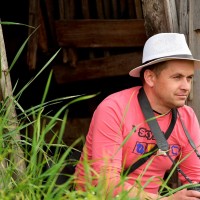 | Sveduneac Dorin Lucian Frumos! |
 | Marius Cinteza CREW Mulțumim mult Dorine! |
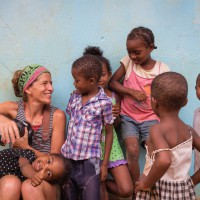 | Gloria Salgado Gispert As Remus says in this fantastic interview, keep reading and learning as much as you can, as a foundation of your photographic journey. Thanks again Marius, these interviews definitely go in that direction. Remus, I did not know about your work, but it was easy to fall in love! It is not easy to find images that make you feel as if you were there inside their stories/lives and your work certainly does. Thanks! |
 | Marius Cinteza CREW Gloria, thank you so much for your kind words! Have a wonderful day! |
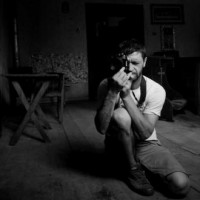 | Remus Tiplea thank you Gloria |
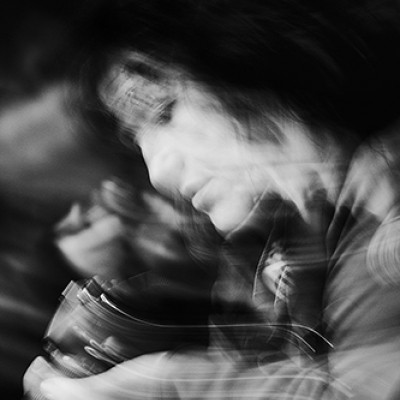 | Raceala Elena PRO Wonderful work, Remus Tiplea ! Great interview ,Marius ! |
 | Marius Cinteza CREW Many thanks, Elena! Have a wonderful day! :-) |
 | Remus Tiplea multumesc Elena
|
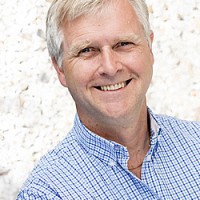 | Knut Arne Gjertsen Very interesting to discover your amazing work Remus Tiplea. It was really inspiring. Thank you for having this opportunity! |
 | Remus Tiplea thank you |
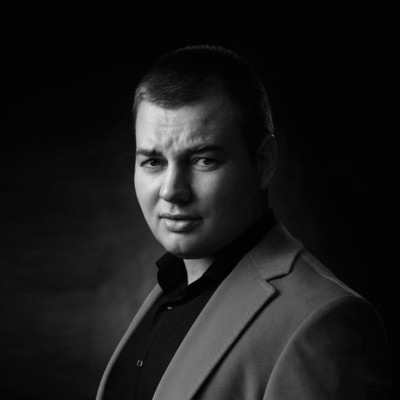 | Mikhail Potapov CREW Amazing photos, very interesting interview,
Thank you Remus Tiplea, have a nice weekend!!! Thank You Yvette! |
 | Yvette Depaepe CREW All honors go to Remus Tiplea and to Marius for leading this great interview, Mikhail. I just published it with great pleasure ;-) |
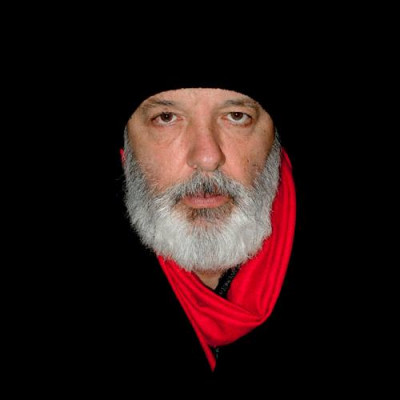 | Massimo Della Latta Complimenti |
 | Remus Tiplea thank you Massimo |
 | Yvette Depaepe CREW Delighted to discover more about you and your work, Remus. I'm following you and admire your photography since my very first day on 1x. Thank you so much for this great interview.
Also a big thanks to Marius for leading this wonderful conversation with the interesting personality Remus is. My very best compliments to both of you. Cheers, Yvette |
 | Marius Cinteza CREW Thank you very much Yvette for your kind words! I'm glad you have enjoyed the interview! :-) |
 | Remus Tiplea thank you Yvette ,thank you Marius , I am very excited............thank you 1x |